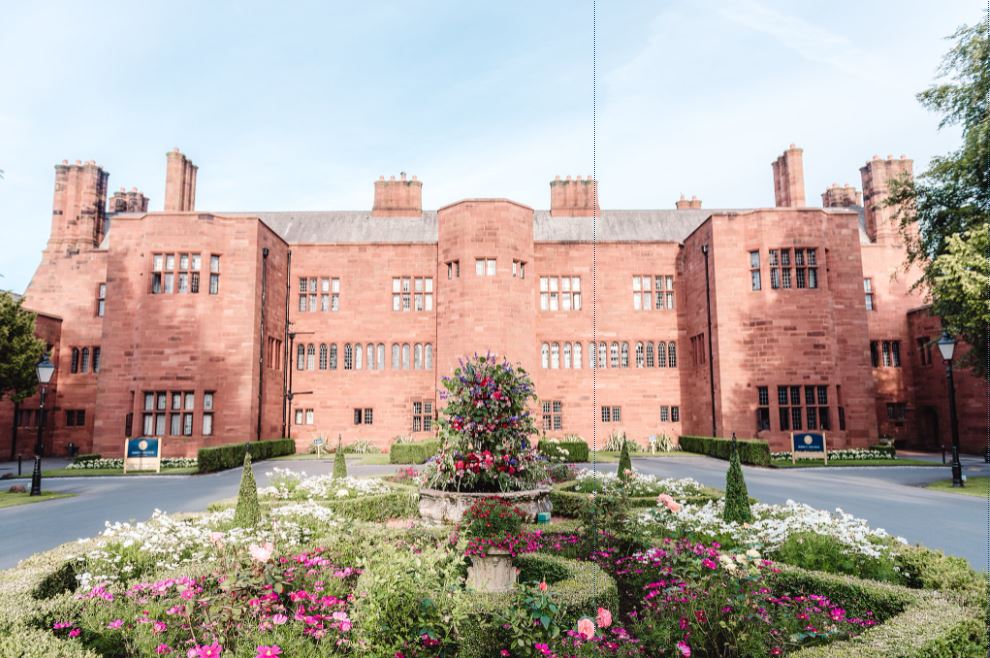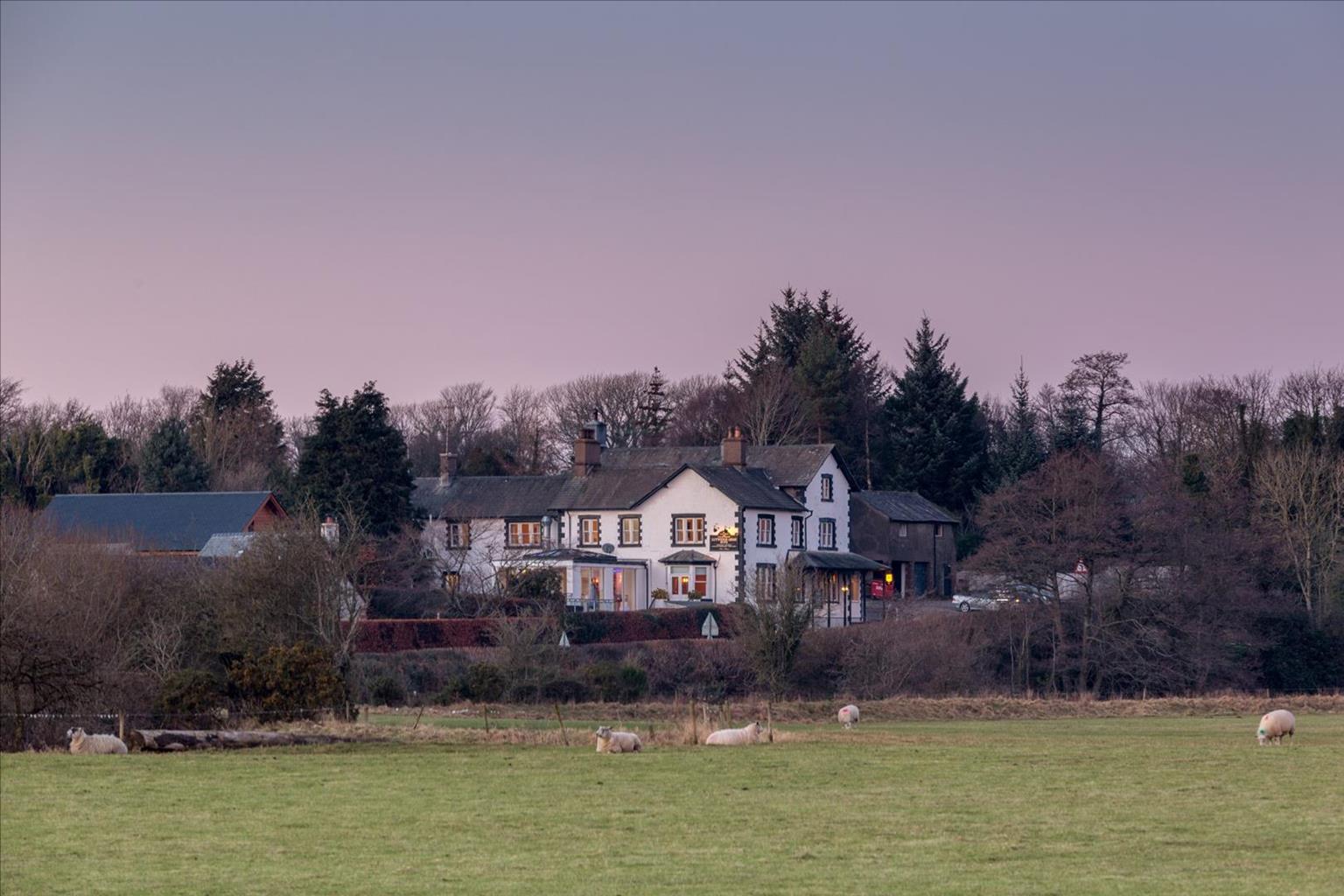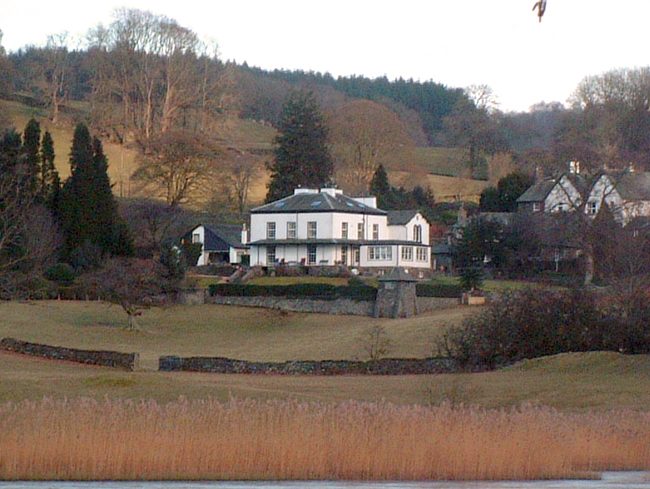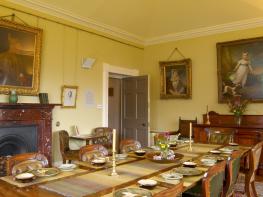A bright, airy and stylish interior for up to 5 guests, open views and a lovely dog-friendly…
Duddon Bridge and the Swinside Stone Circle

Discover Swinside Stone Circle hiding in a hollow above the Duddon.
6.6 miles (10.5kms)
About the walk
TThis is a peaceful walk in one of the quietest corners of the Lake District. It stretches from a tidal estuary to the flanks of the high fells, taking in old coppice woodlands and pastures where sheep and cattle are grazed. Blast furnaces and charcoal burners once belched smoke into the clean air, and ships laden with pig iron sailed from the narrow estuary, but that was a couple of centuries ago. Tucked away among the hills, and seldom visited, Swinside Stone Circle has stood over the scene for 4,000 years or more.
Duddon Iron Furnace
Dating from 1736, the Duddon Iron Furnace was one of eight rural blast furnaces in the area. Apart from the addition of an extra charcoal store, the structure has hardly changed since the day it was built. Information boards show the layout of the site, which included charcoal and iron ore stores, a wheelhouse, furnace, blowing house, casting house, office and slag heap. Ore and charcoal were fed into the furnace from the top of the site and pig iron left at the bottom. Ships transported the iron from Duddon Estuary to Bristol and Chepstow for use in the shipbuilding industry. The small rural furnaces simply went out of business when bigger blast furnaces were constructed. The ruins are managed by English Heritage and are always accessible.
Swinside Stone Circle
The lovely Swinside Stone Circle sits in a quiet hollow in the hills high above the estuary of the River Duddon. It is a late neolithic or early Bronze Age structure, with its stones closely packed together. It appears to be aligned on the midwinter solstice and is about 95ft (29m) in diameter. Locally it is called Sunkenkirk, from a legend relating how a church was once being built on the site, but the Devil kept pulling the stones down into the ground. Like many such circles around the country, it is also said that anyone counting the stones more than once will find that they arrive at a different number each time. With that in mind, it’s probably best to say that there are more than 50, but fewer than 60 stones in the circle. There is also a series of standing stones near Ash House towards the end of the walk, but there is no public access to them.
Walk directions
The Duddon Iron Furnace is on the left of the Corney Fell road, soon after the turning from Duddon Bridge. A public bridleway sign points up a track beside the ruins. By the last building, turn left up a woodland path marked by a low bridleway sign.
Cross a narrow access road and continue uphill. Turn right at a waymarked junction. The path is narrow and steep, but clear enough. Watch for a gate in a wall above on the left. Go through and follow a deep, narrow path flanked by bracken, crossing a low gap in the hills.
Meeting another track, bear right, and soon reach a gate. Go through and follow a walled track until it’s crossed by a tall wall; go through the gate and turn left. Follow a path roughly parallel to the wall and pass an old quarry. Traverse above a farm (Thwaite Yeat), keeping on a level course, then bear left, following traces of an old track, and ascend a moorland slope to a signpost at a road junction.
Turn left down a narrow road signposted ‘Millom’, and then turn right along a farm track. Follow this for 0.5 miles (800m) and go through a gate marked ‘Fenwick’. Follow the track almost to the farm, then turn left at a public footpath sign. Cross three stiles as the path descends through fields to Black Beck.
Cross a footbridge and follow a vague path slanting up and left. Join a track near Swinside farm. Pass to the right of the buildings, then turn left to join and follow the access track downhill. Swinside Stone Circle is in a field on the left.
Walk down the access road, then bear right along a tarmac road to some cottages. Just before them is a stile and public footpath signpost; a field path and another stile lead to Black Beck. Go downstream to stepping stones leading to Beck Bank Farm. Follow waymarks through the farmyard and out to a road. (If the stones are uncrossable, retrace your steps to the cottages and turn left down the road, through Broadgate, to a T-junction. Turn left along the road past old mill buildings to rejoin the route at Point 7.)
Turn left along the road and left again along the A595. On a bend are two farm roads close together. Take the second one (by the postbox) to Ash House. Go straight and level through the garden to an iron gate. Go up to a stile, then right along a narrow path by a wall. Join a green track and continue into woods. Walk uphill, then down to reach a marker post at a junction.
Turn right and weave downhill, then keep left on a wider track. Cross a stream to meet the path used earlier. Descend this to retrace your steps to the Duddon Iron Furnace.
Additional information
Good paths (some can be muddy), farm roads, several stiles
Wooded slopes, mostly rough pasture surrounded by hills
On lead where sheep graze and on roads
OS Explorer OL6 The English Lakes (SW)
Parking space at Duddon Iron Furnace, near Duddon Bridge, or roadside spaces just to the north
None on route
If Black Back is in spate, stepping stones are uncrossable and the detour adds 0.75 miles (1.2km)
WALKING IN SAFETY
Read our tips to look after yourself and the environment when following this walk.
Find out more
Also in the area
About the area
Discover Cumbria
Cumbria's rugged yet beautiful landscape is best known for the Lake District National Park that sits within its boundaries. It’s famous for Lake Windermere, England’s largest lake, and Derwent Water, ‘Queen of the English Lakes'. This beautiful countryside once inspired William Wordsworth and his home, Dove Cottage, in Grasmere is a popular museum. Another place of literary pilgrimage is Hill Top, home of Beatrix Potter, located near Windermere. Tom Kitten, Samuel Whiskers and Jemima Puddleduck were all created here.
Much of Cumbria is often overlooked in favour of the Lake Distirct. In the south, the Lune Valley remains as lovely as it was when Turner painted it. The coast is also a secret gem. With its wide cobbled streets, spacious green and views of the Solway Firth, Silloth is a fine Victorian seaside resort. Other towns along this coastline include Whitehaven, Workington and Maryport. Carlisle is well worth a look – once a Roman camp, its red-brick cathedral dates back to the early 12th century and its 11th-century castle was built by William Rufus.
Nearby stays
Restaurants and Pubs
Nearby experiences
Recommended things to do
Why choose Rated Trips?
Your trusted guide to rated places across the UK
The best coverage
Discover more than 15,000 professionally rated places to stay, eat and visit from across the UK and Ireland.
Quality assured
Choose a place to stay safe in the knowledge that it has been expertly assessed by trained assessors.
Plan your next trip
Search by location or the type of place you're visiting to find your next ideal holiday experience.
Travel inspiration
Read our articles, city guides and recommended things to do for inspiration. We're here to help you explore the UK.













